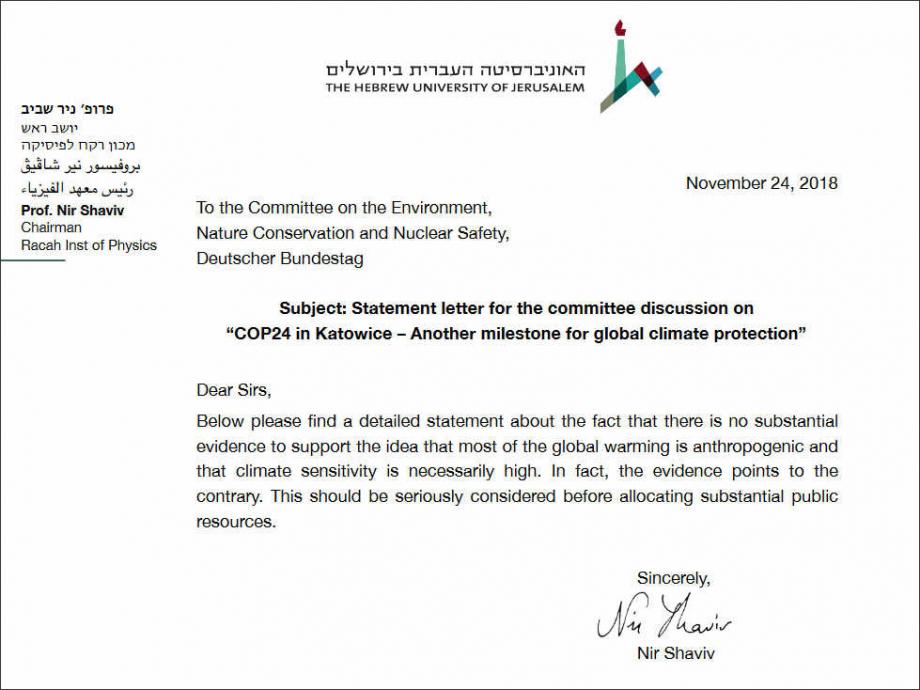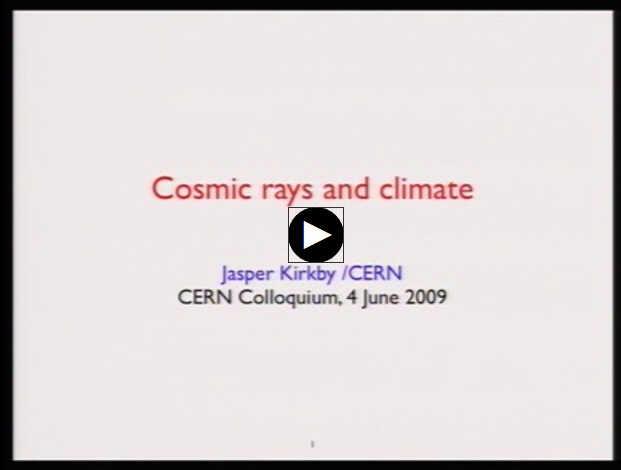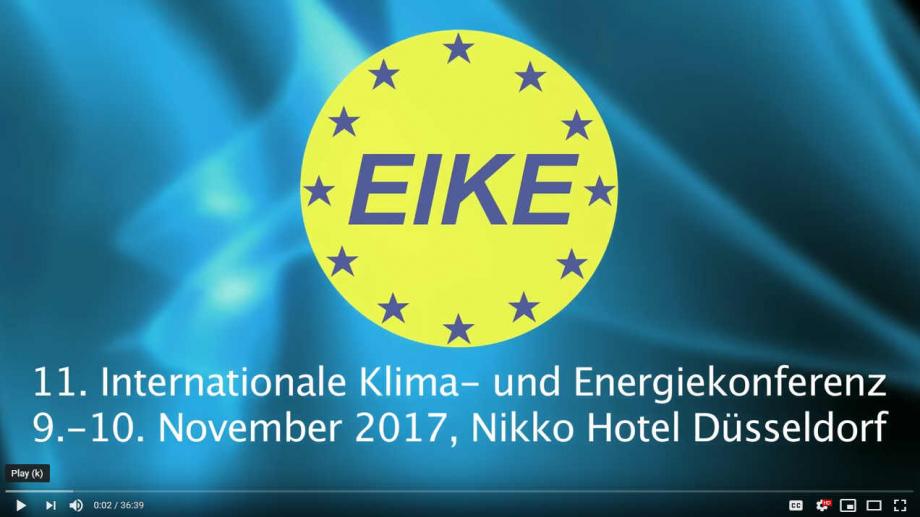Scientists Discover the Sun and Cosmic Rays Determine Earth's Temperature.
Letter from Ni Shaviv to: Committee on the Environment, Nature Conservation and Nuclear Safety, Deutcher Bundestag (German Parliament)
 Complete Letter - PDF
Complete Letter - PDF
_________________________________________
The Impact of Cosmic Radiation on the Climate - Latest Research Findings and their Importance for Understanding Climate Change Part I:
Prof. Dr. med. Nir Shaviv Racah Institute of Physics, The Hebrew University of Jerusalem (here Part I) Shaviv explains why the main arguments of the so-called "climate alarmists" are either false or irrelevant and explains further problems with scenarios of these climate alarmists. He explains the relationship between the sun and the climate and how it has had an impact on past climate change and on future ones.
_______________________
EIKE - European Climate and Energy Institute
Published on Jan 17, 2019
12th International EIKE Climate and Energy Conference (IKEK-12) on 23 and 24 November 2018 in Aschheim / Munich. Professor Svensmark, Center for Solar Climate Research at the Danish National Space Center, Denmark's Technical University, is one of the leading physicists in the field of cosmic-ray climate research. This radiation comes not from the Earth's Sun, but from distant stars that ended up as supernova and hurled their products, mostly extremely fast-moving iron atoms, into the cosmos.
These particles, which hit the earth's atmosphere, would be considerably reduced by the solar wind. Increase the solar activity, thus reducing the influence of cosmic radiation on the upper air layers / troposphere. The indicator for this is the radioactive carbon isotope C14, which forms after the impact of cosmic particles on terrestrial air molecules in a cascade. If the C14 comes to the ground after some time, it would be partly built into living things and can be detected today in fossils. Other cascade products such as aluminum Al26 or beryllium Be10 could be found in the polar ice of the Earth's poles, as these particles were aerosolized and served as condensation nuclei for snowflakes or cloud droplets. In fact, cloud formation between 1985 and 2005 clearly correlated with cosmic ray input.
Professor Svensmark described his laboratory experiments in a self-constructed chamber where, between 2004 and 2007, he studied the effect of radiation on cloud formation. In this chamber were climate gases as an atmospheric model and lamps that represented the solar sun. The experiment formed ions that formed aerosols of about 1-3 nanometers in size. In later follow-up attempts, Svensmark was able to produce aerosols over 50 nanometers in size, which would be necessary for the formation of condensation nuclei.
Conclusion: A high cosmic radiation input thus indicates cold phases of the climate. The ions generated in the upper layers of air by cosmic radiation cascades are able to cause the formation of nuclei for cloud formation (and snowflakes). The corresponding data on cosmic radiation are consistent with the solar cycles and climate evolution in the Holocene (geological age since 10,000 BC).
_________________________________________
In Part 2, Prof. Dr. Henrik Svensmark on the effects of atmospheric ionization on the growth of cloud condensation nuclei.
________________________
Cosmic Rays and Climate
by Jasper Kirkby (CERN)
Thursday 4 Jun 2009, 16:30 → 18:00 Europe/Zurich
Main Auditorium** (CERN)
The current understanding of climate change in the industrial age is that it is predominantly caused by anthropogenic greenhouse gases, with relatively small natural contributions due to solar irradiance and volcanoes. However, palaeoclimatic reconstructions show that the climate has frequently varied on 100-year time scales during the Holocene (last 10 kyr) by amounts comparable to the present warming - and yet the mechanism or mechanisms are not understood. Some of these reconstructions show clear associations with solar variability, which is recorded in the light radio-isotope archives that measure past variations of cosmic ray intensity. However, despite the increasing evidence of its importance, solar-climate variability is likely to remain controversial until a physical mechanism is established. Estimated changes of solar irradiance on these time scales appear to be too small to account for the climate observations. This raises the question of whether cosmic rays may directly affect the climate, providing an effective indirect solar forcing mechanism. Indeed recent satellite observations - although disputed - suggest that cosmic rays may affect clouds. This talk presents an overview of the palaeoclimatic evidence for solar/cosmic ray forcing of the climate, and reviews the possible physical mechanisms. These will be investigated in the CLOUD experiment which begins to take data at the CERN PS later this year.
 VIDEO: https://cds.cern.ch/record/1181073?ln=en#
VIDEO: https://cds.cern.ch/record/1181073?ln=en#
________________________________________________
Cloudy climate change: How clouds affect Earth's temperature - Jasper Kirkby
As the Earth’s surface temperature gradually rises, it has become vital for us to predict the rate of this increase with as much precision as possible. In order to do that, scientists need to understand more about aerosols and clouds. Jasper Kirkby details an experiment at CERN that aims to do just that. Lesson by Jasper Kirkby, animation by Cedric Richer.
VIDEO - Jasper Kirkby: The CLOUD experiment at CERN studies the formation and growth of aerosol particles in the atmosphere and their interaction with clouds. This TEDx lesson by CLOUD spokesperson Jasper Kirkby is an introduction to the physics behind the project, and more details can be found in the links on the left of this page.
www.ClimateDepot.com
____________________________________


